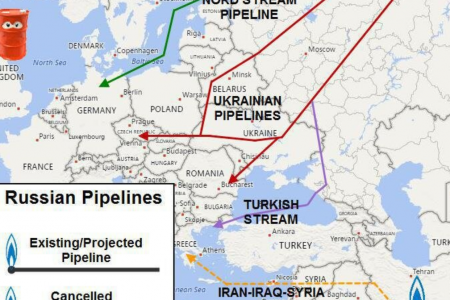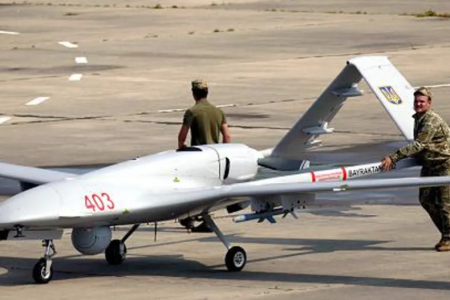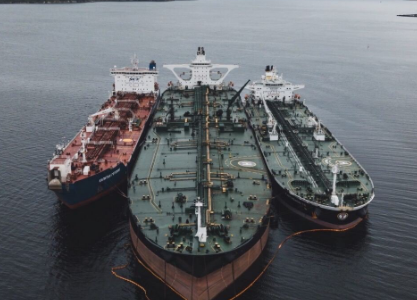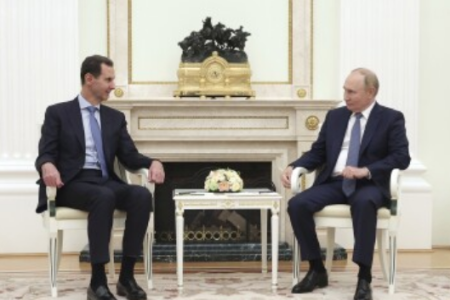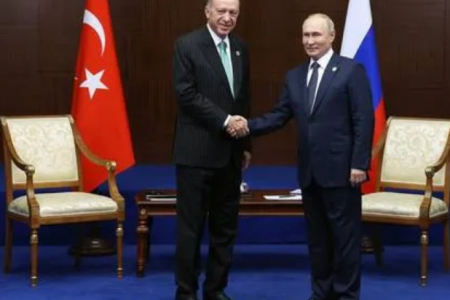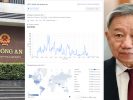
Recently, the US military confirmed that China has completed the construction of a pier more than 330 meters long at its only foreign naval base in Djibouti on the shores of the Bab el-Mandeb Strait in East Africa.
The modernization of this port will allow China to receive aircraft carriers as well as service the new Type 075 multi-purpose amphibious assault ships, which will soon occupy a pivotal position in the People’s Republic of China (PLA)’s land operations. At the same time, the results of satellite image analysis show that China is building a second pier or jetty to increase the capacity of its naval base.
All of these activities have the potential to allow the PLA Navy to project its power outside of its traditional operational zones in the South China Sea and the East China Sea, thereby significantly enhancing Beijing’s position in the global arena.
Tools to increase global influence
China is discussing options for building and operating overseas military bases to protect its growing interests around the world. They take into account not only their position in the future but also political, economic, cultural factors, as well as access to regional infrastructure.
The foundation for the PLA to expand its presence in other countries is a commercial logistics network, built by China’s private and state-owned companies through the implementation of their own projects, or through procurement, long-term lease, and common use of seaports, airports, and existing facilities.
The task of protecting China’s interests abroad is largely borne by the PLA Navy, which gives it the opportunity to conduct operations outside its traditional range, which is relatively close to the Chinese coast.
China needs overseas bases mainly to ensure the security of China’s seaborne trade routes and supply chains. This creates the inevitable link between Beijing’s military presence and the “Belt and Road” initiative.
In addition, China’s overseas military installations provide logistical support for anti-piracy operations, peacekeeping force deployments, and humanitarian missions, including disaster relief. and non-war military operations such as civilian evacuation and rescue.
The purpose of all of this is to enhance China’s international image, and in the long run, will allow Beijing to increase its influence in the world.
China officially established its first overseas base in Djibouti in August 2017, with an initial construction cost of about $590 million. The base is operated by the PLA Navy with the main purpose of providing logistical support to the Chinese military in the Gulf of Aden and the Red Sea, as well as for peacekeeping and humanitarian operations in Africa.
The strategic location of this naval base gives China a strong foothold in the Western Indian Ocean. As such, Beijing is seeking to protect key commercial shipping lanes that carry most of China’s imported energy and goods at sea.
The presence of Chinese troops in Djibouti, if necessary, will greatly increase Beijing’s ability to protect investments and infrastructure in the region, as well as ensure security for about one million Chinese nationals in mainland Africa and another 500,000 in the Middle East.
Where will the next base be located?
Since China established a naval base in Djibouti, researchers inside and outside China have been trying to speculate where Beijing’s next strategic overseas stronghold will be located.
A 2020 special report by the US military listed areas that are likely to become where China’s presence expands. According to the document, China is likely to consider placing PLA logistics bases in Myanmar, Thailand, Singapore, Indonesia, Pakistan, Sri Lanka, United Arab Emirates, Kenya, Seychelles, Tanzania, Angola, and Tajikistan. China is said to have sought to build bases in Namibia, Vanuatu, and the Solomon Islands, but it is Cambodia that attracts the most attention from observers.
In July 2019, the Wall Street Journal quoted unnamed US officials as saying that Beijing and Phnom Penh are believed to have signed a secret agreement that gives China access to the Ream naval base for 30 years, and this treaty would automatically be renewed every 10 years. In return, China pledged to modernize Cambodia’s infrastructure, for which, in the second half of 2020, a number of engineering works and buildings built by the US and Australia were demolished, including the tactical headquarters of the National Maritime Security Committee.
Both China and Cambodia vehemently deny that they signed an agreement allowing the PLA Navy access to the Ream base. The Hun Sen government also mentioned that the Cambodian Constitution prohibits the deployment of foreign troops in the country.
Another PLA logistics facility in Cambodia is probably the $3.8 billion Dara Sakor tourism project in 2016 under the framework of the “Belt and Road” initiative. The Cambodian government has signed a 99-year land lease contract with China’s Tianjin United Development Corporation for about 20% of the Cambodian coast in Koh Kong province in the south of the country.
After that, much of the project was suspended, except for the construction of Dara Sakor International Airport with a 3 km runway. According to some experts, these facilities could be used by the Chinese military for their own purposes in the future.
Doubts are warranted given the growing cooperation between the two militaries, as well as Cambodia’s gradual departure from the West in response to frequent criticisms of democracy and human rights. In recent years, the Hun Sen government has canceled cooperation programs with the US Navy, canceled the Angkor Sentinel military exercises with the US, and conducted similar exercises called Golden Dragon with China.
Although there is currently no clear evidence of a PLA presence at Ream base or civilian sites in Dara Sakor, the possibility cannot be ruled out in the future, especially considering Cambodia’s growing Chinese debt and Phnom Penh’s deepening push into China’s sphere of influence.
Cambodia has an important geostrategic position in Southeast Asia, located in the west and southwest of Vietnam, to the east of Thailand; bordering the lower reaches of the Mekong River basin; both connecting to the sea and projecting the arterial waterway of mainland Southeast Asia; has a deep-water port of Sihanoukville located in the strategic maritime route from the Indian Ocean to the Pacific Ocean. Therefore, Cambodia is considered as the second pearl in China’s “String of Pearls“, aiming to connect the Hong Kong special administrative region with Sudan via the Indian Ocean and help China access the Gulf of Thailand and the East Sea one at a time most convenient way. Dominating Cambodia brings China many benefits in terms of politics and national defense and security. With its presence in Cambodia, China can hold a strategic location, limiting the increase of influence of the US and Japan in the region in the context of their support for the Philippines and Vietnam poses challenges to China’s “cow’s tongue” claim in the East Sea (South China Sea); at the same time, contributing to increasing pressure on Vietnam from the southwest direction in case China-Vietnam relations are strained.
In addition, located in the heart of mainland Southeast Asia, Cambodia’s Sihanoukville port is known as a base with an important strategic location for military power projection in the Gulf of Thailand and Malacca Strait; can deploy logistics bases and secure gasoline for the current three fleets to control the South China Sea, the Pacific, and the Indian Ocean. The Kampong Chohnang airfield area can help control the air force in the area, forming a remote defensive front for China. Cambodia’s air bases and airfields could play a role in the event that China lacks the ability to refuel in the air to control the airspace over the sea. Dominating Cambodia, China can use its military bases to intervene in ASEAN, threatening this region.
Thoibao.de (Translated)








